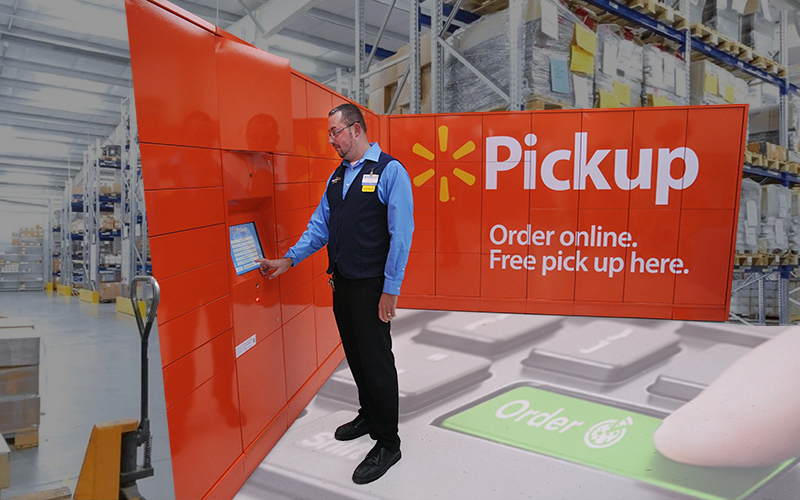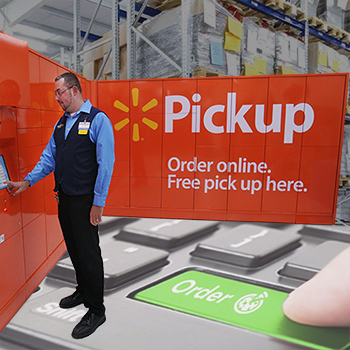Last-Mile Delivery from “Wow” to “Required”

This differentiation, this “wow” lasts for a period of time, but eventually becomes a minimum expectation for the consumer and is later described as a “required feature.”
In marketing classes there’s usually a segment on customer expectations.
When some new feature is added to a product or service it’s supposed to carry a “wow factor.”
This differentiator - this “wow” - lasts for a period of time, but eventually becomes a minimum expectation for the consumer and is later described as a “required feature,” a perfect example would be cup holders in cars.
At one time, the cup holder was a nice addition to a new car.
For a while we even witnessed cup holder wars, as different brands added cup holders to all the seats to outdo their competitors.
Today, we would be shocked if a car didn’t have a lot of cup holders conveniently placed - in fact, the typical front seat now has at least two.
In case you haven’t noticed, last-mile delivery for consumers and small businesses has moved from “wow” to “required’ in a very short time.
Even small items are routinely delivered quickly to the door - often free of additional freight charges.
As on-line retailers and the supporting freight service providers have saturated the market with fast service, the expectation of buyers has risen to the point where we are confident of service, and thus we’re reducing inventories of everything from light bulbs to truck tires.
For those with buying responsibilities and those with responsibility for receiving product, the game has changed. Where they once focused on commodity prices in great detail, they now need to add freight pricing to their knowledge base.
These buyers need to understand the underlying economics of transportation in order to truly understand total landed cost for the item purchased.
Understanding what the vendor is paying to provide you fast direct delivery, as little as two hours in some cases, helps you to decide if you want or need this premium service now seen as a standard - an ever more expensive standard level of service. Remember, somewhere you’re paying for delivery.
One indicator of the cost is the difference stated by vendors on their web site regarding terms of service level and the amount of money you’re spending. For example, there may be a minimum purchase to save a percentage on shipping, or there may be different prices for speed of delivery or an annual fee to be in the “club.”
Walmart released a new tactic where the customer is offered a discount of 5% to 10% for picking up the item they ordered on-line at a nearby Walmart store.
Read: Walmart’s E-Commerce Future under Marc Lore Starting to Come Together
This, of course, relieves the pressure on small shipment capacity at distribution centers as the item can be sent with a regular truck to the store, and at the same time attracts consumers to the store where they might be tempted to pick up more items while in the building.
This assumes, of course, that they have a pleasant experience waiting in line at the customer service desk trying to pick up their item. If not, this experience will drive them away from the retailer.
In fact, a major home center told me that the customer pickup storage room in their store quickly exceeded 1,500 items, and it was taking up to 40 minutes to find items when folks came to pick them up.
Purchasing, transportation professionals and consumers need to pay attention to this new service experience. Convenience comes at a premium, and there may be alternate ways to satisfy a need at a lower total landed cost. Of course, getting a shopping list completed from the couch may well be seen as worth it.
Related Article: The Ecommerce Fight for Last Mile Freight Delivery
Related White Papers
Making the Last Mile Pay
This white paper examines the latest innovation in last-mile services and explores how companies can harness the opportunities, and keep customers happy, without undermining their businesses - or promising more than they can deliver. Download Now!
Redefining Final Mile Delivery in the Age of the Customer
In this whitepaper, you will find key insights on how to manage delivery costs while ensuring a heightened delivery experience for your customer. Download Now!
Best Practices for Optimizing Last Mile Pick up & Delivery Operations
This white paper provides an overview of the Top 10 best practices for establishing, managing and measuring effective last mile P&D delivery programs. Download Now!
Mobile-Enabling Logistics: Turning the “Last Mile” Into a Competitive Advantage
This whitepaper describes real-world examples of how companies are using mobility to optimize the last mile for increased profitability, customer satisfaction, and compliance. Download Now!
More SC24/7: “Last Mile” White Papers
Article Topics
Convey News & Resources
project44 makes third acquisition of 2021, acquires Convey Convey issues March Data for FedEx, UPS, USPS & regional carriers on-time performance Convey survey takes long look at key holiday delivery challenges for retailers Report: FedEx is back in Amazon’s good graces following temporary holiday season ban Convey survey takes a long look at shoppers’ holiday shipping expectations Convey and MercuryGate tout new last mile-focused partnership Convey’s new Delivery Exception Management Platform addresses last mile delivery issues More ConveyLatest in Transportation
Talking Supply Chain: Doomsday never arrives for Baltimore bridge collapse impacts Amazon Logistics’ Growth Shakes Up Shipping Industry in 2023 Nissan Channels Tesla With Its Latest Manufacturing Process Why are Diesel Prices Climbing Back Over $4 a Gallon? Luxury Car Brands in Limbo After Chinese Company Violates Labor Laws The Three Biggest Challenges Facing Shippers and Carriers in 2024 Supply Chain Stability Index: “Tremendous Improvement” in 2023 More Transportation


















